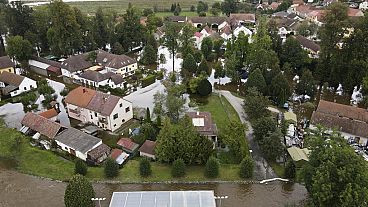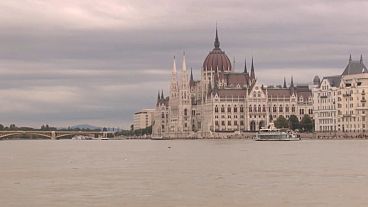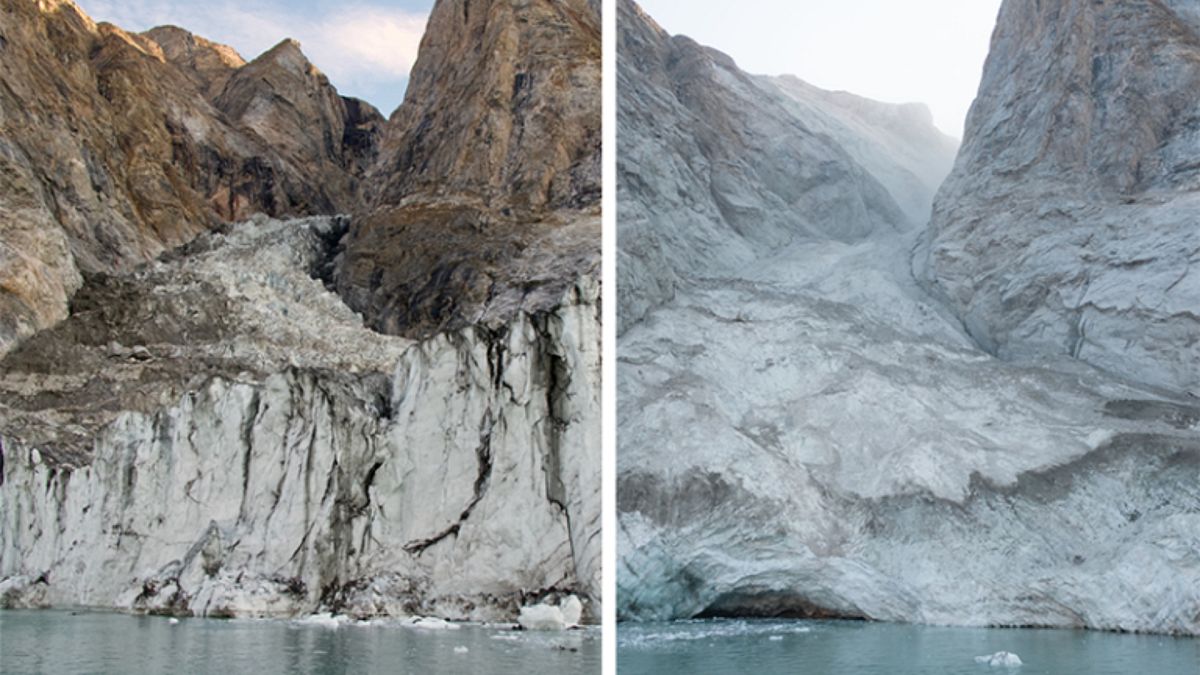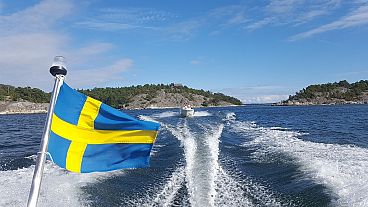Scientists were baffled by seismic signals which were recorded from the Arctic to Antarctica for more than a week last September.
Last year, a massive climate change-triggered landslide in a remote part of Greenland shook the Earth for nine days.
Seismometers detected mysterious vibrations all over the globe, from the Arctic to Antarctica in September 2023. They were different to the usual signals caused by earthquakes and contained only a single vibration frequency, like a monotonous hum.
“When I first saw the seismic signal, I was completely baffled,” says the co-author of a new study into the event, Dr Stephen Hicks from University College London’s Earth Sciences department.
“Even though we know seismometers can record a variety of sources happening on Earth’s surface, never before has such a long-lasting, globally travelling seismic wave, containing only a single frequency of oscillation been recorded.”
It was this, Hicks says, that inspired him to co-lead a team of scientists to figure out the puzzle. A team of 68 researchers from 40 institutions in 15 countries set out to solve the mystery.
What caused the mysterious vibrations?
The international team discovered that the events after a massive climate change-triggered landslide were responsible for the seismic signals.
A 1.2km-high mountain peak collapsed into Greenland’s remote Dickson Fjord in September last year. An estimated 25 million cubic metres of rock and ice crashed into the fjord - enough to fill 10,000 Olympic-sized swimming pools.
Trapped in the narrow fjord, the water splashed back 200 metres in the air. It generated a 110 metres high wave which extended 10km across the fjord - but reduced to 7m within minutes.
News of a massive tsunami in a northeast Greenland fjord helped researchers start to connect the dots.
The team used computer modelling, satellite imagery and field measurements to recreate the landslide and what happened after. Their model predicted that the water would have continued sloshing backwards and forwards in the twisty fjord every 90 seconds for around nine days.
The modelling matched recordings of the vibrations that travelled around the Earth’s crust, creating a planet-wide “hum”.
Though the initial event wasn’t observed by human eyes, the recreation shows how this massive landslide and subsequent mega-tsunami caused the global seismic signal that puzzled scientists.
Climate change caused the massive landslide
The landslide, researchers write, was a result of the glacier at the foot of the mountain thinning and being unable to hold up the rock face above it. This was ultimately due to climate change.
“As a landslide scientist, an additional interesting aspect of this study is that this is the first-ever landslide and tsunami observed from eastern Greenland, showing how climate change already has major impacts there,” says lead author Dr Kristian Svennevig, from the Geological Survey of Denmark and Greenland.
The Arctic is warming nearly four times as fast as the rest of the planet and Greenland’s ice cap is losing an estimated 30 million tonnes of ice an hour. As glaciers which support the region’s mountains melt, “climate change is increasingly predisposing polar regions to large landslides”, the study says.
Though it happened in a remote area, these fjords are sometimes visited by Arctic cruise ships. Fortunately, none were in the area when the landslide happened but the consequences of such a massive tsunami would have been devastating.
Researchers conclude that rapidly accelerating climate change means it is more important than ever to characterise and monitor regions like this that were previously thought to be stable. It would provide essential early warnings for these massive landslide and tsunami events.















